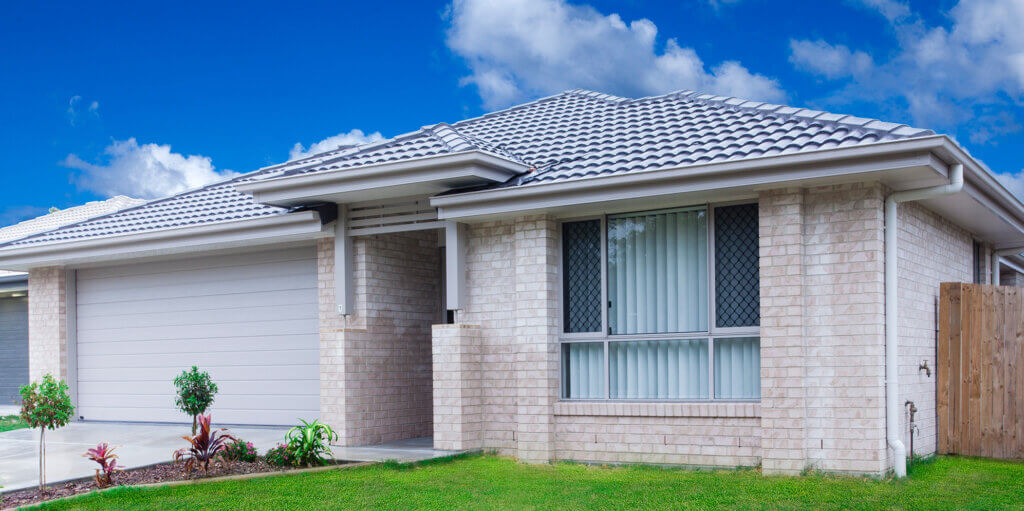Why Speed (and Savings) Matter
Life happens fast. Whether you’re facing foreclosure, divorce, costly repairs, or inherited property you don’t want to maintain, every extra month a house sits unsold and drains money and energy. The average real estate commission is 5‑6 percent—roughly $18,000 on a $300,000 sale. Skip the listing agent and you keep that cash or use it to solve urgent financial needs.
This guide shows you:
- Exactly how to sell your house fast without a realtor—step‑by‑step.
- How to price smart, market aggressively, and stay legal as a for‑sale‑by‑owner (FSBO) seller.
- When a trusted cash buyer like iBuyHomes can shrink a months‑long process to days.
Situations That Demand a Quick Sale
- The foreclosure clock is ticking—avoid damage to your credit.
- Divorce or bankruptcy—split assets or settle debts swiftly.
- Tired landlord—tenants, repairs, and lease hassles draining you.
- Inherited or probate property—you’ve got taxes and upkeep but no plans to move in.
- Major repairs—termites, mold, or storm damage you can’t afford to fix.
- Job relocation—carry two mortgages? No thanks.
If any of these sound familiar, speed isn’t a luxury—it’s survival.
FSBO vs. Listing Agent vs. Cash Buyer—At-a-Glance
| Option | Typical Time to Close | Out-of-Pocket Costs | Net Profit* | Effort |
|---|---|---|---|---|
| FSBO (do it yourself) | 30-90+ days | Flat-fee MLS ($100-$2,000), photos, attorney, buyer-agent fee (2-3%) | High if priced right | High |
| Traditional agent | 45-120 days | 5-6% agent commission + buyer-agent fee | Often 8-13% more than FSBO, but slower | Medium |
| Cash home buyer | 7-21 days | Zero repairs, no agent fees | Lower offer than retail, but saves months of holding costs | Low |
*Based on National Association of Realtors data showing FSBO homes typically sell for ~13 % less than agent‑represented properties—but remember you skip 6 % in commissions and avoid repair bills.
Step 1: Prepare & Price for a Lightning‑Fast Sale
Research Your Home’s Fair Market Value
- Pull comparable sales (comps)—homes nearby sold in the last 3–6 months of similar size, age, and condition.
- Check median sale price trends on real estate sites such as Zillow, Redfin, or Realtor.com.
- Adjust for upgrades, square footage, and lot size.
Pro‑tip: Price just below a round number—e.g., list at $249,900 instead of $250,000—to show up in more online price‑range searches.
Set an Irresistible Listing Price
- Hot market? Price 1‑2 % under fair market value to spark a bidding war.
- Slower market or needed repairs? Price 3‑5 % under comps for immediate attention.
- Remember: homes that linger beyond 30 days see price drops averaging 2‑4 %. Starting sharp beats chasing the market down.
Step 2: Market Like a Pro—No License Required
List Everywhere Buyers Look
- Flat‑Fee MLS – Pay a one‑time fee so your home appears on the local multiple listing service (MLS) and 100+ real‑estate sites.
- FSBO listing websites – Post on Zillow, Craigslist, Facebook Marketplace, and dedicated “for owner” websites.
- Yard sign + flyer box – Old‑school but still drives drive‑by traffic.
Make Your Home Pop Online and in Person

- Hire a professional photographer—bright, wide‑angle shots boost clicks by 118 %.
- Write a benefits‑driven description: highlight new roof, school district, walkability.
- Stage key rooms (or use virtual staging) to create move‑in‑ready vibes.
- Host weekend open houses; prep with fresh mulch, glowing lights, and a sparkling entry.
Attract Local Buyers Fast
- Share your listing on neighborhood Facebook groups, Nextdoor, and local investor meetups.
- Offer a buyer‑agent commission (2‑3 %) so agents still bring clients.
- Consider timing—Thursdays 10 a.m. listings get the most weekend showings.
Step 3: Negotiate & Handle the Paperwork
Must‑Have Legal Documents
| Document | Purpose |
|---|---|
| Sales contract (purchase agreement) | Defines price, contingencies, timelines. |
| Seller’s property disclosure | Details known defects (mold, lead paint, structural issues). |
| Lead‑based paint disclosure | Required nationwide for homes built before 1978. |
| Title search & deed | Proves ownership; clears liens. |
| Settlement statement (HUD‑1 or Closing Disclosure) | Final accounting of costs. |
State variations matter. For example:
- North Carolina requires a due‑diligence fee and a “Final Purchase & Sale Agreement.”
- Pennsylvania sellers must file multiple lead‑based paint and flood zone forms.
- Alabama requires an attorney to prepare all closing documents.
Work With a Real Estate Attorney
Even when you’re an experienced home seller, an attorney (≈$500–$1,500) is your safety net against lawsuits. They:
- Draft or review the sales contract.
- Confirm state‑specific disclosures.
- Coordinate with the title company or escrow agent.
Step 4: Closing the Deal & Cutting Costs
- Title & escrow fees: Shop around—rates vary up to 20 %.
- Transfer taxes & recording fees: Fixed by state/county; your attorney will calculate.
- Home warranties or concessions: Consider offering a $500 home warranty credit instead of costly repairs.
- Negotiate split closing costs—buyers may shoulder some fees if you priced aggressively upfront.
Typical FSBO closing costs: ≈7.5 % of the final sale price (vs. 10 % with an agent).
Accelerate Everything: Selling to a Trusted Cash Buyer
Sometimes speed and certainty beat every extra dollar. Cash home buyers remove nearly every barrier:
- Request an offer – Fill a 5‑minute form on iBuyHomes.
- Get a no‑obligation cash offer in 24‑48 hours.
- Close in as little as 7 days—no repairs, showings, or financing fall‑through risk.
When a Cash Offer Makes Sense
- Foreclosure auction date is looming.
- Major repairs would kill your budget.
- Inherited property you can’t manage from another state.
- Problem tenants or eviction headaches.
- You need certainty to move on—fast.
Yes, you’ll sell below retail value, but factor in:
- 0 % agent commissions
- 0 % repair credits
- 0 holding costs (mortgage, utilities, taxes) while waiting
Often the net difference is smaller than you think, and the stress savings are enormous.
Common FSBO Mistakes (and How to Dodge Them)
- Overpricing—biggest deal‑killer; leads to multiple price drops.
- Dark, cluttered photos—buyers click away in seconds.
- Poor disclosure—hiding defects invites lawsuits.
- Weak marketing—“list it and pray” doesn’t work.
- Going it alone on legal docs—DIY forms can blow up at closing.
Checklist: Price right ➜ market everywhere ➜ disclose honestly ➜ lawyer up.
Quick‑Reference Checklist
Choose the Fast‑Sale Path That Fits Your Situation
Selling your house fast without a realtor is absolutely doable—if you:
- Price competitively and market aggressively (FSBO route).
- Stay compliant with every legal requirement in your state.
- Weigh the true costs of time, repairs, and stress.
When the clock is ticking or repairs are overwhelming, a cash home buyer provides unmatched speed and certainty. Whichever route you choose, the steps above will help you move forward confidently and keep more money in your pocket.
FAQ: Selling Your House Fast Without a Realtor
The timeframe for selling a home after a divorce depends on numerous factors, including your divorce settlement terms and financial situation. While there’s no universal deadline, most experts recommend selling within three years of finalizing your divorce to maximize tax benefits. Your divorce decree may specify a timeline for listing or selling the marital house. Without court-mandated deadlines, the decision timeline is typically driven by financial considerations, housing market conditions, and the emotional readiness of both parties.
Whether to sell before or after divorce depends on your specific circumstances. Selling before finalizing your divorce often simplifies the process by:
- Eliminating disputes over home equity and property value
- Allowing for a cleaner division of proceeds in the divorce settlement
- Potentially qualifying for higher capital gains tax exclusions ($500,000 for married couples versus $250,000 each for singles)
- Reducing ongoing co-ownership complications and expenses related to joint ownership
However, selling after divorce might be preferable if the housing market is unfavorable or if one party needs time to secure alternative housing. The decision should account for both financial implications and practical considerations.
Financial outcomes from selling a house during divorce vary widely based on each spouse’s interest in the property, other marital assets, and the specific terms of your settlement. Neither party universally “loses more.” The financial impact depends on:
- Whether the home was separate property or jointly acquired during marriage
- Each spouse’s contribution to mortgage payments and home improvements
- How the home equity is divided relative to other assets
- Current interest rates if either you or your ex needs to secure new financing
- Individual income levels and housing needs post-divorce
Working with a top agent experienced in divorce sales and competent financial advisors can help ensure both parties receive a fair outcome.
People commonly sell their house after divorce for several practical and emotional reasons:
- Financial necessity: One party alone often cannot afford to maintain the mortgage payments and household expenses
- Clean break: Selling eliminates ongoing financial entanglements and the need to co-own property with an ex-spouse
- Asset division: The home equity may need to be divided as part of the overall divorce settlement
- Fresh start: Many people prefer to begin their new life without the emotional attachments of the marital home
- Practical considerations: The home may be too large, too expensive, or impractical for one person, especially if it was chosen to accommodate children who may now split time between households
To achieve the best price when selling a home after divorce:
- Make necessary repairs before listing to increase market appeal
- Consider professional staging that uses sparse furnishings to highlight space and potential
- Price competitively based on comparable homes in your area, not emotional value
- Set a realistic list price slightly below market value to generate multiple offers
- Remove personal items that indicate a divorce situation, as this could lead buyers to make lower offers
- Hire an experienced real estate agent who understands the unique challenges of divorce sales
- Maintain the home’s appearance throughout the selling process, despite living arrangements
- Be flexible with showing times to maximize exposure to potential buyers
Managing the mortgage until your house sells requires clear agreement between both parties. Options include:
- Continuing joint responsibility for payments according to the existing schedule
- Having the occupying spouse make payments with credit at closing
- Creating a dedicated account funded by both parties for mortgage payments
- Documenting all payment arrangements in writing as part of your separation agreement
Remember that missed payments will affect both parties’ credit scores regardless of who lives in the home, so maintaining clear communication about financial responsibilities is essential until the property officially changes hands.


